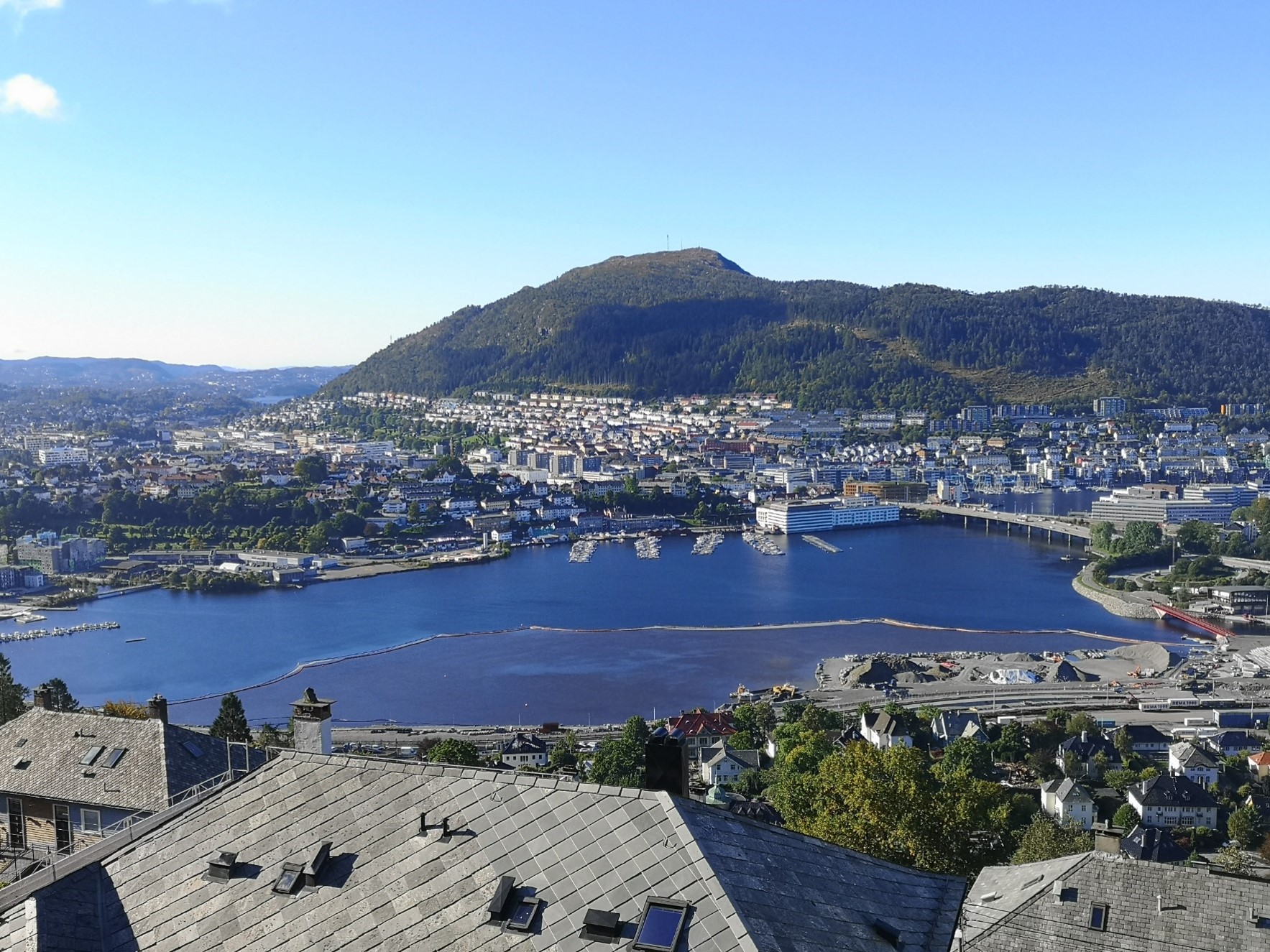CEEQUAL Excellent (76.5%) – Whole Project Award
Version 5, July 2022 | Bergen, Norway
Assessor: Henning Fjeldheim, Skanska Norge
Verifier: John Logan, SCAPE
Client: Bybanen Utbygging
Contractor: Skanska Norge
Project Summary
The Bybanen tram-project is part of the Miljøløftet. Miljøløftet is a common term for the urban growth agreement and the city infrastructure development package in Bergen. Miljøløftet coordinates investment in public transport, environmental improvements, road construction, pedestrian and cycle paths, and ensures that the goal of a more environmentally friendly urban development and transport system will be reached.
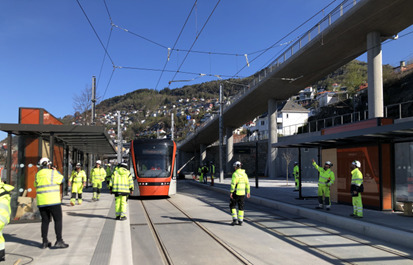
The D12 contract is one of several groundworks contracts on the Bybanen construction phase 4 from downtown Bergen to Fyllingsdalen. The D12 contract covers the groundwork on the stretch from Fløen (AdO Arena) to Kronstad which mainly consisted of:
- Construction of a 1 km rock tunnel including shafts and access to an underground tram stop at Haukeland hospital
- Groundworks outside of the tunnel
- Deconstruction of buildings and existing infrastructure
- Deposits of excavated rock in Store Lungegårdsvann
- Deposits of excavated rock in the tram track
- Pedestrian- and cycle paths
- Groundworks using piles and sheet piles
- Concrete structures such as a cut-and-cover tunnel, tunnel portals, culverts, a pedestrian bridge and retaining walls

Metrics
Embodied carbon emissions: 18.869 tonnes CO2 equivalent (27% reduction from baseline achieved)
Re-used material: 121 tonnes (0,1% of total material used)
Potable water usage in construction: 70.227 m3 (57% of total water usage)
Financial Benefits
Did the use of CEEQUAL deliver any financial benefits?
The most concrete financial benefit directly attributed to CEEQUAL was the engagement of the workforce leading to several “grassroot” reuse initiatives. This accumulated to the reuse of about 170 tonnes of material including formworks, stoneblocks, crushed stone, pallets etc. which saved new material and associated costs: reused material in the finished project PLUS material reused in the construction processes (formworks for example which does not remain as a part of the finished project).
In your view, has CEEQUAL represented value for money?
The most important added value from CEEQUAL in this project is:
- Transforming the sustainability efforts into something more tangible for the workforce, administration as well as the client. This in turn helps in creating engagement
- Forcing the project to set goals for an extended set of environmental aspects
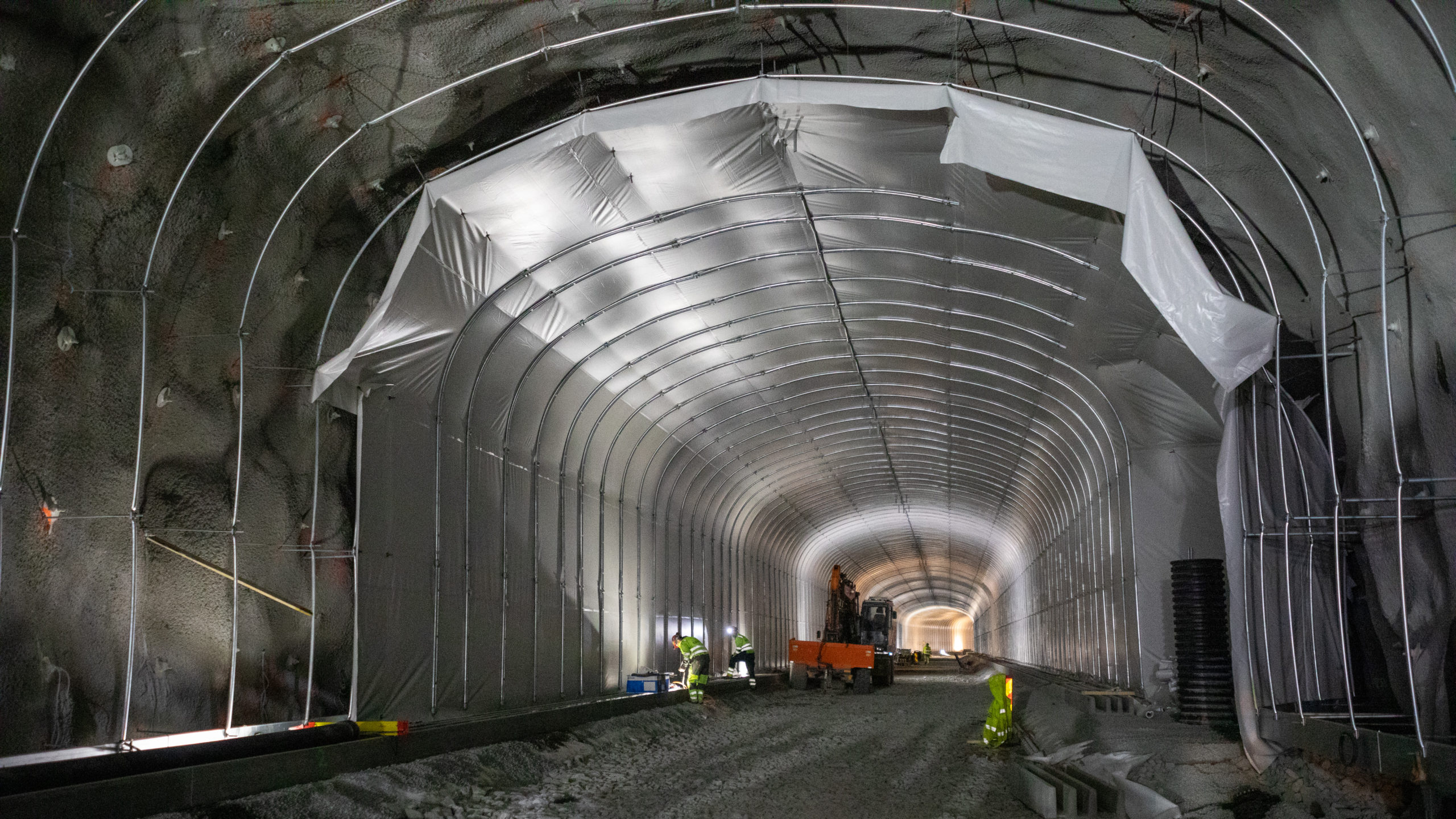
Achievements
Project management
Tailored training and information for different units of the workforce increased the knowledge. Combined with status updates at regular intervals and friendly competition created engagement in the sustainability work.
Regular reporting in the defined goals through monthly report to the client ensured proper management of relevant issues.
People and communities
Several issues recorded through the community engagement programme and during construction led to action to accommodate the requests in addition to planned proactive measures:
- Existing trees were retained and access to playground was maintained according to requests
- Replanning of the on-ramp at Fløenbakken
- some works were postponed slightly to accommodate a 90th birthdayparty in the Fløenbakken area
- restructuring site layout to reduce nausiance for neighbours as requested
Structured follow-up of the local community related to satisfaction with communication and site traffic through a targeted questionnaire at regular intervals. This also helped identify areas and aspects of focus.
Ecology and Biodiversity
It was identified that there were potential occurrence of vulnerable species of bird on the site. This was communicated to the workforce. This resulted in identification and relocation of relevant nests established on the site during construction. As well as establishing specialized nesting boxes that were inhabited.
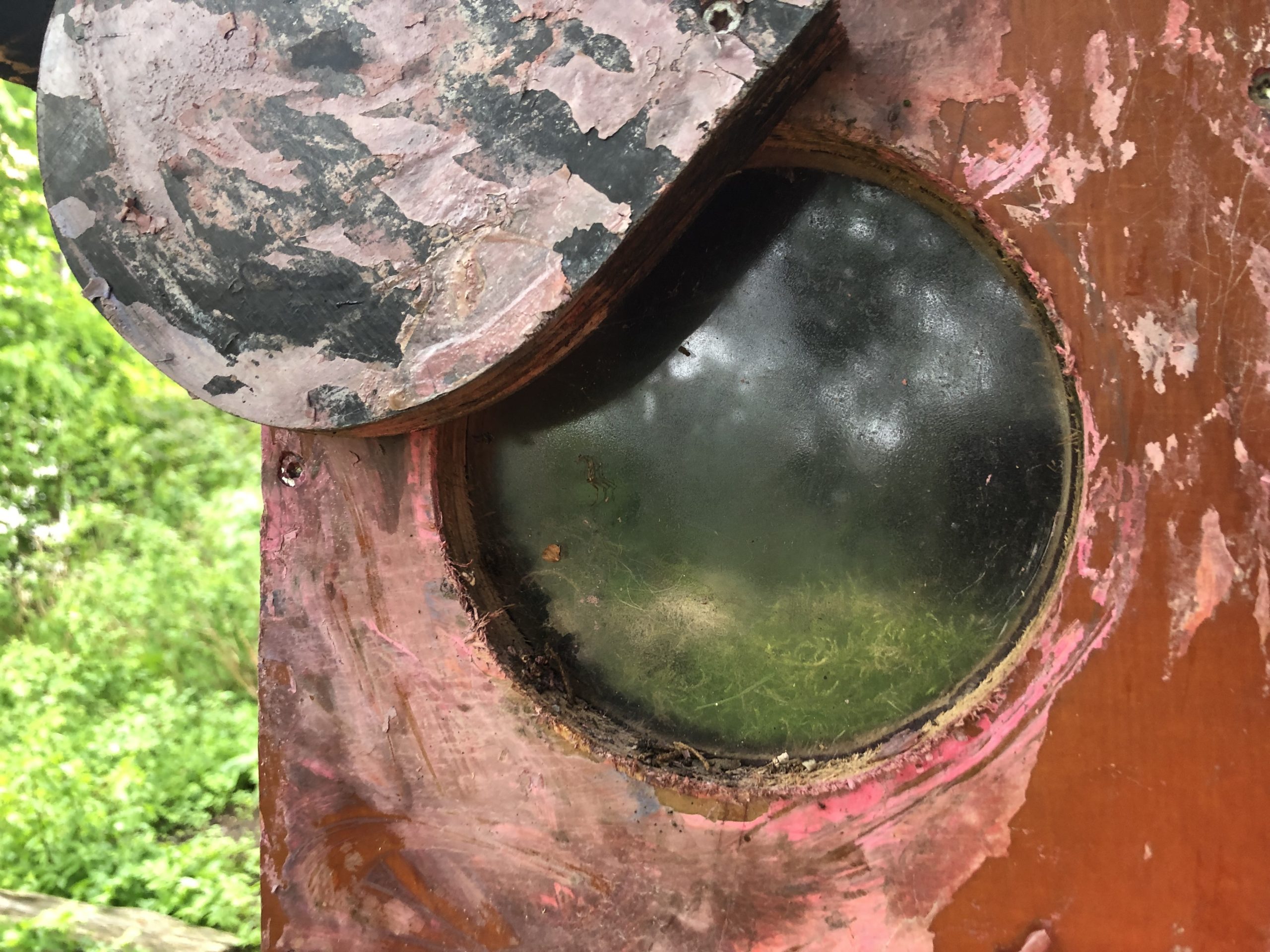
The Alrekstad Oak is an old tree protected due to its size, age, condition and importance for biodiversity locally. It was successfully protected throughout the construction phase with works going on in close proximity.
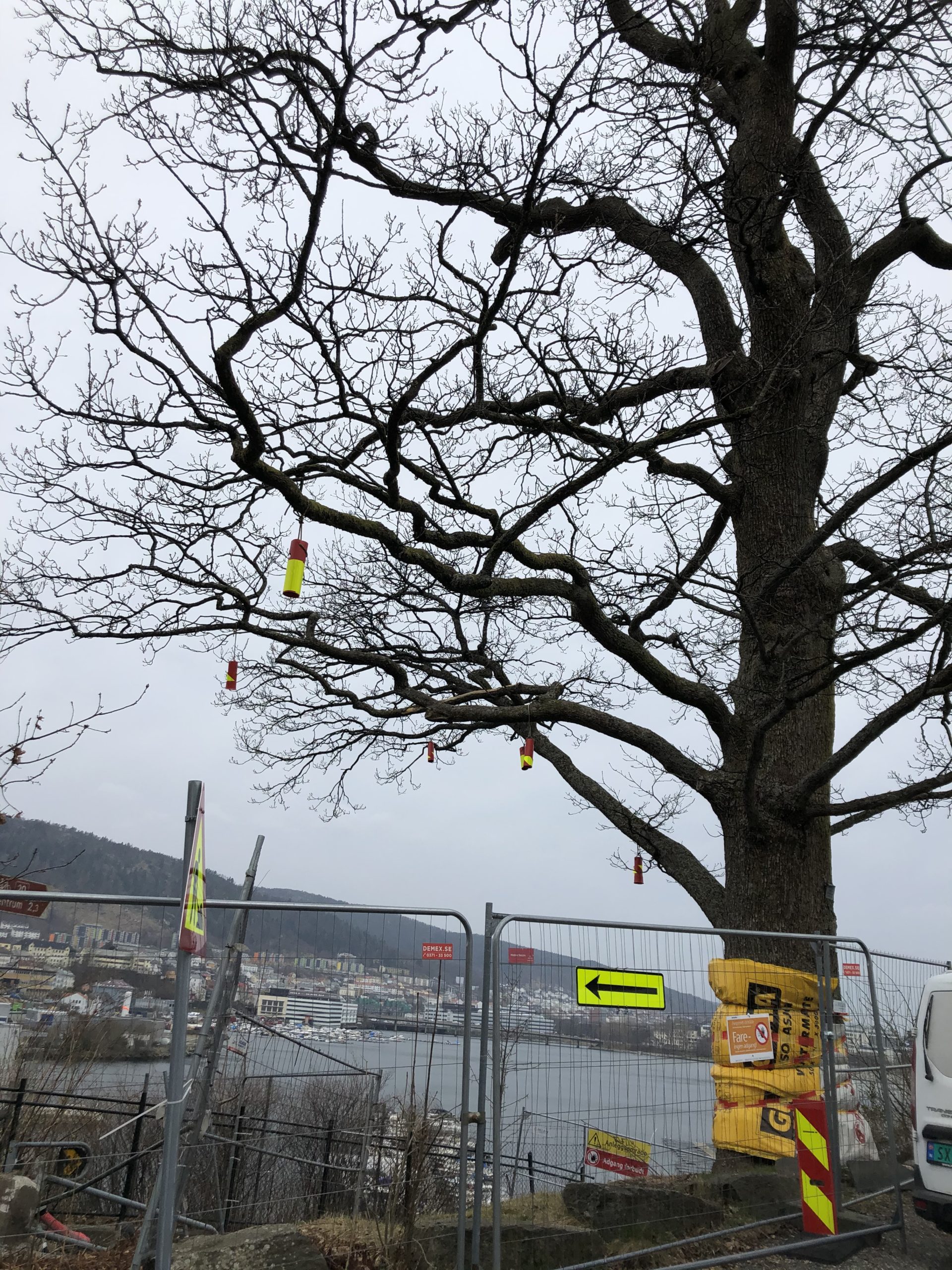
The Water Environment
Plastic remains from the explosives used in the tunnel are deposited along with the majority of the excavated material in the body of water called Store Lungegårdsvann. To manage the marine waste associated with the project a goal was established to become “Marine Waste positive”.
There were two components of this strategy:
1.Minimizing the marine waste by:
- using electronic detonators reducing the quantities of plastic
- implementing routines to remove plastic remains before loading blasted rock on to trucks
2. Removing marine waste by:
- Implementing routines to collect visible plastic remains after depositing the excavated masses in Store Lungegårdsvann
- Arranging clean-ups around Store Lungegårdsvann with the project workforce also inviting local schools etc.
The total potential for plastic deposited in Store Lungegårdsvann as part of the project was calculated. The measured quantities collected as part of regular routines and clean-ups are 8 times larger than the maximum quantities estimated released.
The project was also used as a test arena for different innovations for collecting marine waste through a partnership with NOSCA by using the area within the filtercurtain to be able to establish a reference to see measure their effect.
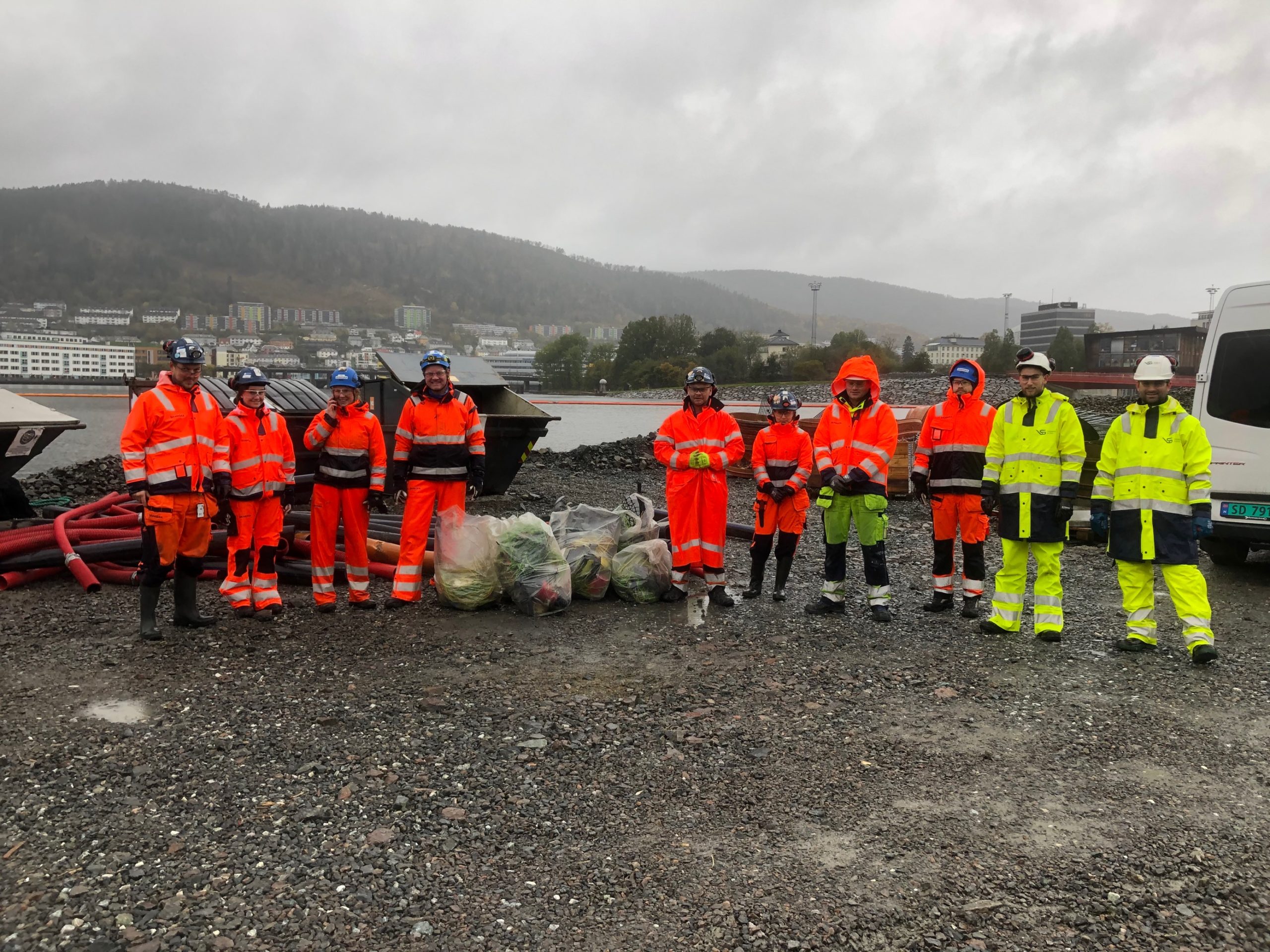
Physical Resources
Overachieving on Bybanen Utbyggings ambitions resulted in a reduction of greenhouse gas emissions of 5900 tonnes CO2e. This equals 27% reduction compared to a realistic reference.
The major contributors were the use of:
- Advanced biofuels derived mainly from used cooking oil for all construction works and an efficient construction plant
- Low-carbon concrete class A for 99% of structures
- Products with low documented greenhouse gas emissions by conscious choice in procurement
Engaging the workforce and suppliers of the project in sustainability on the operational level. For example by hosting regular friendly competitions highlighting the best efforts in a given period. This resulted in implementing measures that reduced the greenhouse gas emissions beyond what was originally planned by 470 tonnes CO2e (more than 2% of the total for the contract). At the same time the waste (excluding excavated material) was reduced by 270 tonnes (about 13% of the total for the contract).
The major contributors were:
- Reducing the quantity of steel by 110 tonnes needed for steel piling by using high strength steel.
- Reuse of more than 3000 m2 of formworks
- Reuse of 65 m3 granite blocks from constructions that were removed as part of the contract 60 pallets were donated and used in the construction of a building on a farm in the region
- Creating a process for using excess concrete to cast weights
- The use of electrical bikes for the transport of personnel around the project, replacing cars
- Announcing and giving away 6 tonnes of components and equipment from houses that were removed as part of the contract
The quantity of potable water used was reduced by 43% by reusing water for tunnel drilling rigs, using runoff for keeping the water table stable and using seawater for dust suppression.
Beneficially reusing over 40% of excavated material and 100% of topsoil onsite.
CEEQUAL’s Role
What were the main challenges for the project and how were these overcome?
The main challenges of the project were:
- Working in a densely populated area and potentially affecting a large number of people over a longer period. This was managed by having regular and structured contact with relevant parties as well as ongoing dialogue with directly influenced neighbours. This work was monitored through questionnaires.
- There were known pollution from previous activity along the project, both on land and in sediments in Store Lungegårdsvann. Relevant training was given to different units of the workforce and routines were established for extended testing to map the pollution in detail during construction and determine if the volumes needed to be transported offsite for safe management or if and how they could be used on site. Furthermore a siltcurtain was established to prevent the spread of pollution as a result of depositing excavated rock in Store Lungegårds vann. There has been ongoing monitoring by measurements throughout the construction phase.
What were the drivers and perceived benefits for undertaking a CEEQUAL assessment on this project?
The background for undertaking a CEEQUAL assessment on this project was the intention of following up the ambitions from the strategy phase in a structured manner as well as creating incentives to go beyond the minimum requirements.
How did the use of CEEQUAL influence the outcomes of the project? What was done differently because of the CEEQUAL process?
The main differences a result of implementing CEEQUAL on the project was structuring the follow up of the environmental goals on the project on a regular basis with the result of more people becoming engage with the sustainability efforts on the project.
What elements of this project highlight best practice and innovation?
Realizing the potential for reduction of greenhouse gases and waste of engaging the workforce on the operational level.
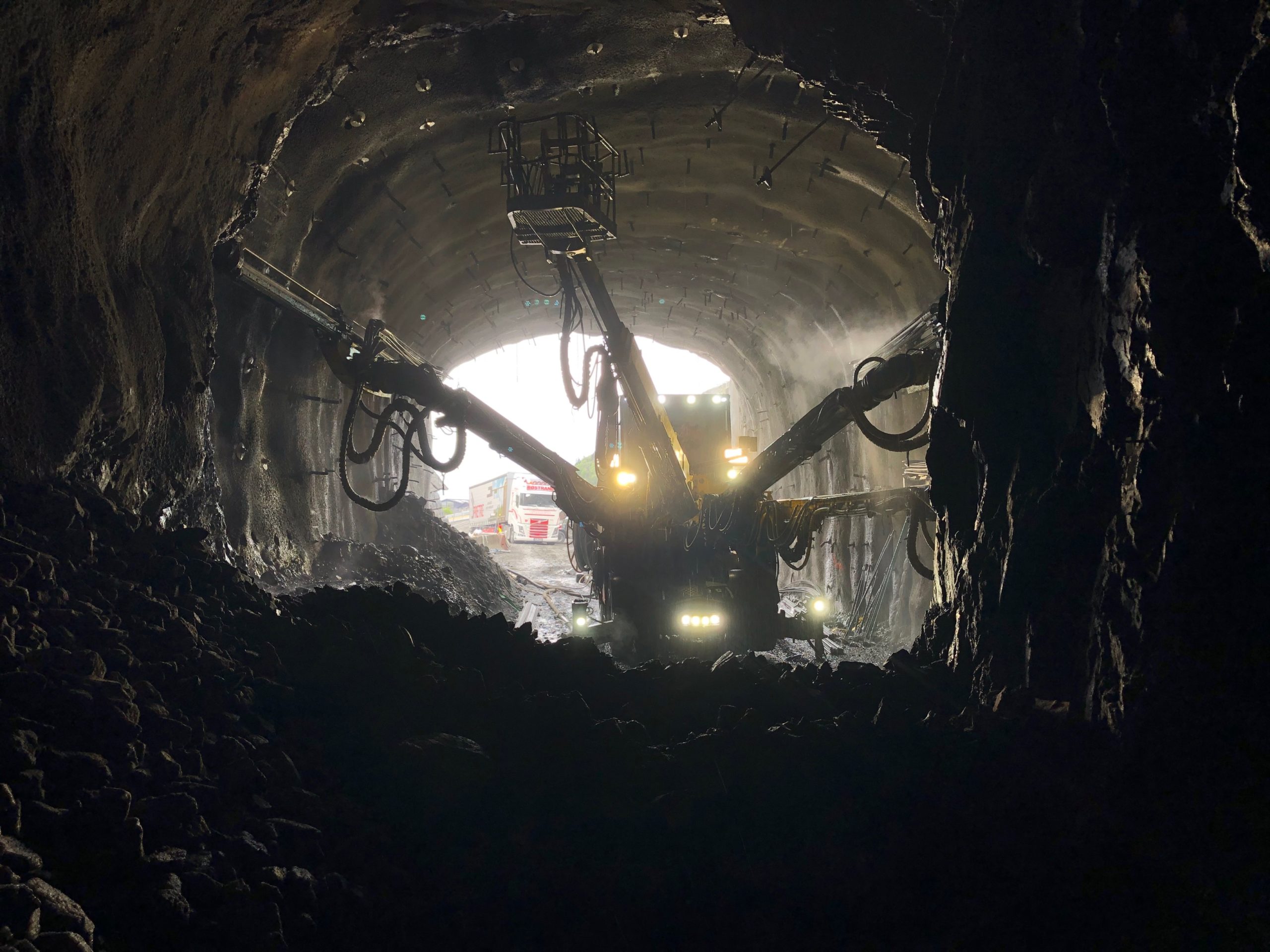
Quotes
Olaug Godøy, Environmental Coordinator, Bybanen Utbygging
“Implementation of the CEEQUAL Construction Award on the Bybanen D12 contract built efficiently on the through work from the strategy phase as well as the ambitious sustainability goals. It helped engaging the workforce in the sustainability mindset. D12 implemented CEEQUAL as the first of the Bybanen Phase 4 contracts as well as introducing CEEQUAL in the Bergen-area. As several of the following Bybanen-contracts also implemented CEEQUAL we took the initiative to establish a CEEQUAL-forum facilitating knowledge sharing across the different contractor-organizations.”
Ole Jakob Oanes, Project manager, Skanska
“We are proud to be the first to introduce the CEEQUAL-scheme to the Bergen area following Skanskas strategy to be the leading contractor on sustainability. I’m happy to see that the CEEQUAL-scheme engaging the project in sustainability matters in a positive way.”
